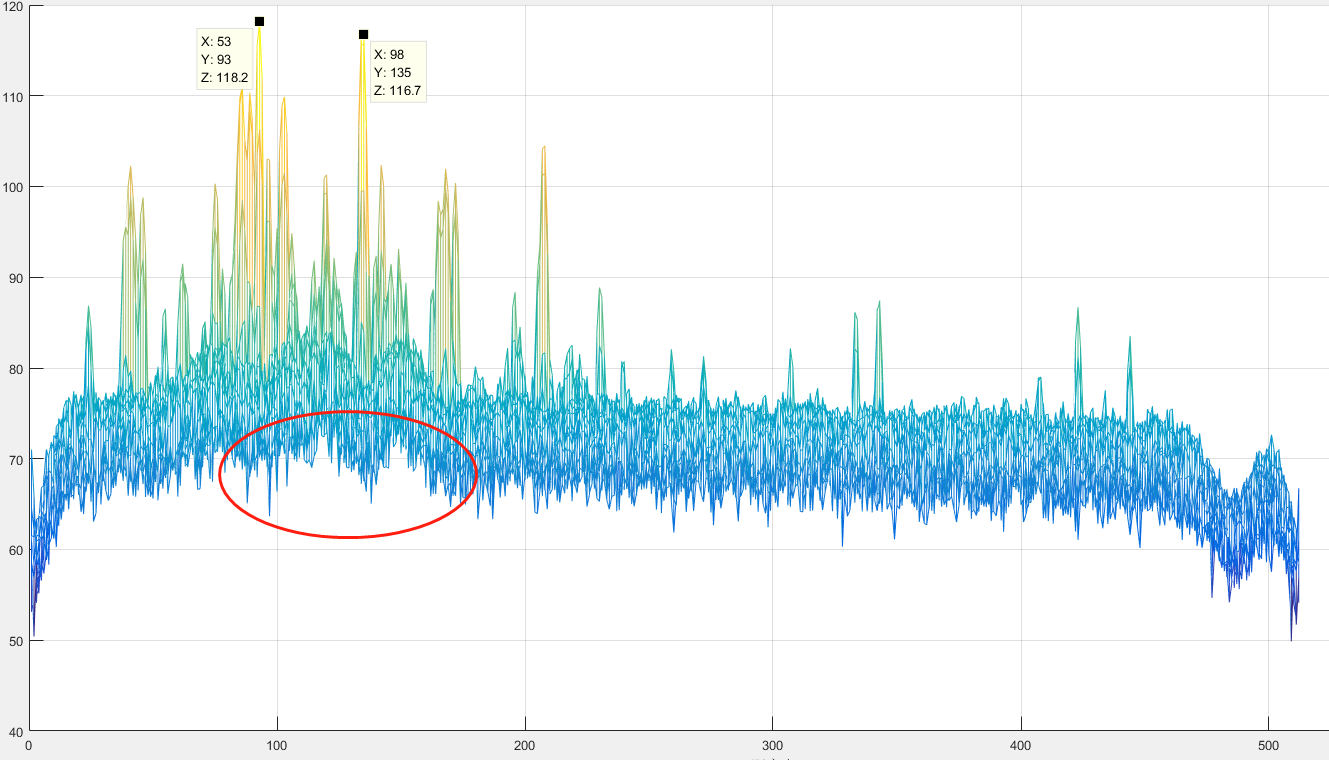Other Parts Discussed in Thread: IWR1843
Hello,
our team is using IWR1843 to develop out product, and we come across the problem of spectrum spread:
when real target is strong enough ,there will be two kinds of spectrum spreading in 2D FFT ,
1) the nearby range bins will show flase spectrums which is in the same Doppler bin with the real target ;
2) the nearby range bins will show flase spectrums which is in all Doppler bins ,this problem is exactly same as the related isues:
the two real target seats are (93,53),(134,98), their power in 2D FFT is around 116dBm,
parameters you may need :
chrip end time is 50us,
sampling rate is 12MHz, 1-complex,
Rx_gain is 44dB,
ADC bit is 16bits,
ADC samples numbers is 512,
chirp num is 128,
question:
1) when target power beyond 110dBm in 2D FFT ,the spectrum spreading problem happens frequetly, is LNA saturated?
2) based on parameter above, I calculate target input power on the ADC = 116dBm - 20*log10(32768) - 20*log10(512)--20l*og10(128) = -70dBm, am I right?
3) how can I solve this problem?






